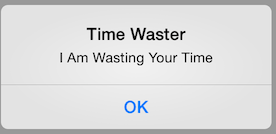I recently downloaded an application for doing ‘time since’ tracking. Tracking these stats is not something I would associate with cloud based services – I would anticipate the data being on-device, and not leaving unless you explicitly chose to export it.
The first thing I encounter is a login screen. It asks for an email and password, and if I don’t have an account, it asks to create one; obviously requiring an email and password.
Closed app,
Deleted from device.
I have no way of interacting with the app without an account, as a result I don’t know if it’s good or bad, all I know is that it’s asking for some PII, and I’m not willing to take the chance that it’s trustworthy.


